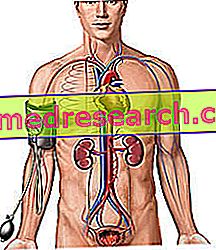Hypertensive crises consist of dramatic increases in blood pressure, which significantly increase the risk of suffering a heart attack and other organ complications. Extremely high blood pressure levels - reached when the (maximum) systolic pressure equals or exceeds the threshold of 180 mmHg, and the diastolic (minimum) level exceeds over 120 mmHg - they can damage blood vessels.

Depending on the magnitude of the pressure rise and its consequences, hypertensive crises are divided into two categories, that of urgency and that of emergencies. In the latter case, unlike the first, there is an objective suspicion that the hypertensive crisis has produced acute and progressive organ damage; moreover, the pressure values are generally higher (equal to or greater than 220/140 mm Hg).
The signs and symptoms of hypertensive urgency, therefore uncomplicated, can include severe headaches, dyspnoea (air hunger, shortness of breath), anxiety and anxiety. In hypertensive emergencies, on the other hand, severe and potentially lethal complications may occur, such as myocardial infarction, stroke, cerebral haemorrhage, mental confusion up to coma, chest pain (angina pectoris), aortic dissection (laceration of the intimate aorta), eclampsia ( during pregnancy), acute renal failure and fluid accumulation in the lungs (pulmonary edema) due to left ventricular failure.
Fortunately, hypertensive emergencies are rare and mostly involve hypertensive patients who do not follow an adequate therapy to maintain pressure values normally; sometimes they can be caused by an undiagnosed pheochromocytoma, therefore lacking pharmacological control. The diagnosis of hypertensive emergency is made, in addition to the patient's medical history and physical examination, by checking blood pressure (electrolytes, renal and cardiac damage markers), urinary sediment and electrocardiographic tracing.
Hypertensive emergencies are clinical events in which the patient is in danger of life and therefore a rapid reduction in blood pressure is necessary; therefore, rescue operations involve hospitalization in intensive care and prompt intravenous injection of hypotensive drugs, in order to limit organ damage. The choice of drug must obviously be made on the basis of the characteristics of the emergency that occurred and the organ damage associated with it. If hypertensive crises, on the other hand, are of simple urgency, blood pressure is generally reduced with oral medication, without the need for hospitalization, but only for an outpatient follow-up.
The patient can contribute to the prevention of hypertensive crises through careful blood pressure control (regular monitoring of arterial pressure and drug intake according to the doses and the prescribed modalities); under medical indication, the maintenance of a healthy weight, a sober and balanced diet, together with regular exercise and optimal stress management, can help reduce blood pressure and with them the risk of suffering hypertensive crises.



